Recommendations for growing bindweed tricolor in the open field
The delicate charm of bright inflorescences of tricolor bindweed enchants every grower at first sight and makes you want to plant it in your flower garden. Growing tricolor bindweed from seeds is an easy task, every flower lover can do it.
Bindweed tricolor is a perennial plant of the bindweed family with a creeping stem up to 3 m long; in our climatic conditions it is grown as an annual. The closest relative of the tricolor bindweed is the field bindweed, a weed known to all summer residents. The plant is frost-resistant, rarely affected by pests and diseases. Blooms from June to late autumn, flowers bloom only in sunny weather, so you can tell if it will rain. After flowering, a box with two large seeds is formed, which can be easily collected for sowing for the next season.
Reproduction and planting
Usually tricolor bindweed is propagated by seeds, although propagation by dividing rhizomes or cuttings is possible. Cultivation from seeds is possible immediately in the open field or by seedling.
Growing from seeds:
- In open ground, seeds are sown in late April - early May. They are placed in shallow grooves, which are covered with a film, pre-planting is well watered. The film is removed when the threat of night frost has passed. So that the plants do not interfere with each other, you need to thin out the seedlings and leave a distance of 25-30 cm between the plants. The removed plants can be planted on other beds.
Advice! The bindweed seeds are large, so it is better to plant them one at a time, immediately away from each other. The seeds are pre-soaked for 1-2 days.
- Seeds are sown for seedlings in March. A mixture of their humus, peat and sand is poured into the containers, disinfected with a weak solution of potassium permanganate or fungicide. Seeds are sown away from each other or in individual containers so that the stems of grown plants do not intertwine. The containers are placed in a warm, well-lit place, watered infrequently, preventing the soil from drying out. In May, seedlings can be planted outdoors.
Propagation by cuttings
Tricolor bindweed can be propagated by cuttings all summer long. For rooting, cuttings are placed in a container with water or planted in a loose substrate. When the roots appear, the cuttings are planted in a permanent place.
Planting care
Caring for the bindweed is simple, and following a few simple care recommendations will allow you to admire the bright inflorescences all summer.
- For successful vegetation, bindweed requires loose soil with neutral acidity or slightly acidic.
- You need to place the plant in a well-lit place, although it easily tolerates partial shade.
- Water the plantings as the soil dries up. Too much watering is not recommended, because the green mass will grow, and there will be few flowers.
- It is better to feed bindweed with organic fertilizers. Before planting the soil fertilized with peat or with rotted compost, when buds begin to form, wood ash is added. During flowering, complex fertilizers can be added to the water for irrigation, but not more often than once a month.
- It is important to regularly loosen the soil and weed the weeds in the bindweed beds. You can simply mulch the soil under the plantings, mulch will help retain moisture in the soil and prevent weeds from growing.
- It is advisable to remove fading inflorescences, this will stimulate abundant flowering.
- Plants planted in pots and containers need good drainage and additional feeding.
Disease prevention
The bindweed is rarely affected by diseases, therefore, adherence to the correct technique of its cultivation will help to avoid diseases and prevent the appearance of pests on it. Most often, the bindweed can be threatened by powdery mildew and spider mites.
- Powdery mildew.
With an excess of moisture, the plant can be affected by powdery mildew. Powdery mildew is a fungal disease that spreads very quickly and can destroy a large area of plantings in a short time. It appears as a white coating on the leaves, similar to flour. If you do not start fighting it in time, it infects new plants, plaque appears not only on the leaves, but also on the stems and flowers. The plant dries up, turns yellow and dies quickly.
This white bloom is actually a mycelium, ulcers form on the leaves where it appears. Fungi extract nutrients from their plants. Cold damp weather provokes the appearance of powdery mildew. Also, the reason for its appearance may be improper watering, when the plantings are watered without waiting for the earth to dry out. It can occur when plantings are too dense.
When a disease appears on plants, it is necessary to remove the infected leaves of the flowers or plants entirely. If the flowers are planted in pots or containers, the topsoil should be replaced as mycelium can be located in it. It is also necessary to treat the plants with a fungicide solution, and very abundantly, so that it also gets on the underside of the leaves and stems of flowers. The walls of pots, containers and pallets must be treated with the same solution.
To prevent powdery mildew, plantings are thinned out, old leaves that are close to the ground are removed, and the flower garden is watered only after the soil under the flowers has dried.
- Spider mite.
It is a pest that appears on plants in dry and hot weather. Tick larvae and adults feed on the plant's cellular sap, sucking it out of the leaves. Many dots appear on the leaves, over time the leaves turn yellow and fly around. If you do not fight the mite, the plant may die. Females lay several hundred eggs in the ground in just 1-2 months of their life, and they can stay in the ground for a long time until the weather is favorable for them.
Despite the fact that the mite is called a spider mite, the presence of cobwebs on the affected plant is completely optional, so it is not easy to detect it. If at the plantings the leaves begin to turn yellow, dry and fall off, it is necessary to examine the underside of the leaves, the presence of small black dots on it means that the plant is affected by a spider mite.
To combat the pest, first of all, dried and yellowed leaves are removed, which it is better not to throw away, but to burn. The flower garden needs to be treated with an acaricidal preparation, and the treatment is carried out 3-4 times with an interval of 5-6 days, because the death of adults does not mean victory over the tick. Its eggs can remain in the ground, and after a week, young mites reappear on the plants.
Prevention of damage to plantings by this pest consists in regularly spraying flowers in dry and hot weather.
Healing properties
As a medicinal plant, bindweed has been known since the time of Avicenna. The medicinal properties are possessed by wild varieties of bindweed, specifically the field bindweed. It contains a large amount of biologically active substances, vitamins, flavonoids, ascorbic acid.
Infusion of the herb is used as an anti-inflammatory and diuretic for diseases of the bladder. A decoction of bindweed has a positive effect on the gastrointestinal tract, is used as a choleretic and laxative. Also, the broth lowers blood pressure, has a calming effect in case of nervous disorders. For asthma, an infusion of fresh bindweed herb is used.With diluted alcoholic tincture of bindweed, long-lasting wounds are treated with compresses and lotions.
Advice! The dosage indicated in the recipe must be strictly observed as the plant contains toxic alkaloids.
You can prepare medicinal raw materials yourself. The whole plant is harvested during flowering, the roots are harvested in spring or autumn when digging a site. The stems are sorted out, dried leaves are removed, the roots must be rinsed well. Raw materials are dried under a canopy on a clean bedding or on paper. Ready raw materials are stored for no more than a year.
Bindweed tricolor in the design of the site and the house
Due to its unpretentiousness and ease of care, tricolor bindweed is widely used in the design of balconies, terraces, flower beds. You can use it as an ampelous plant, planting it in boxes and pots. With its help, it is good to decorate a fence or outbuildings, to arrange an entrance to the house in the form of an arch. A bindweed planted around a summer veranda or gazebo will not only decorate it with its elegant bells, but will create coolness on hot days. They also use it when decorating balconies and loggias, you just need to install a support or tie up shoots.
As a ground cover plant, tricolor bindweed is used to decorate alpine hills, to create borders. In addition, it is often used to decorate curly frames, grown on supports, using it to create green partitions and walls to hide the secluded corners of the site and garden.
Growing a tricolor pack will delight both experienced and novice growers with its simplicity and remarkable result in the form of cheerful bells decorating their garden plot.
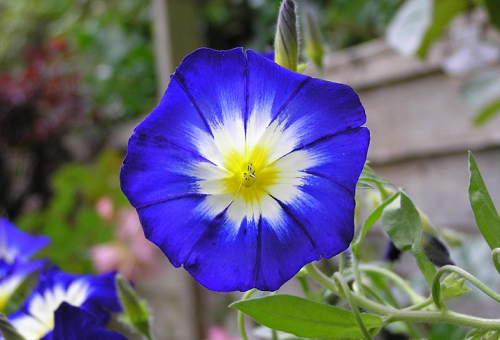
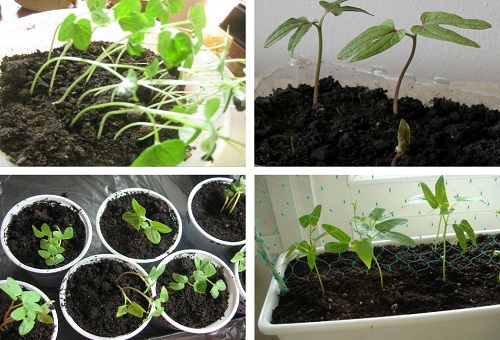
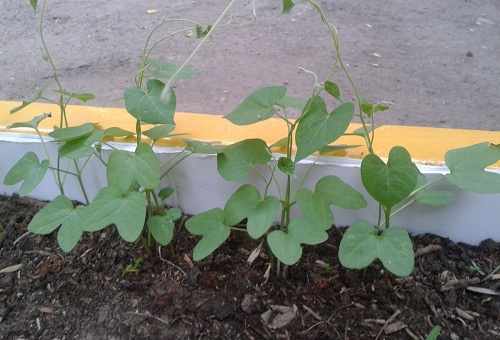
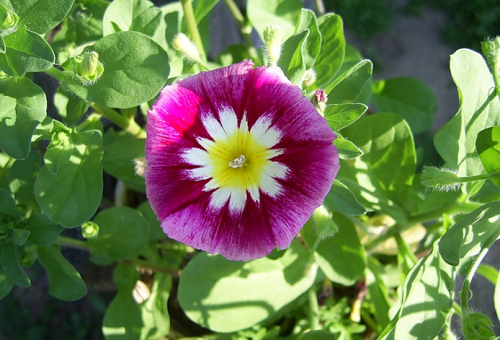
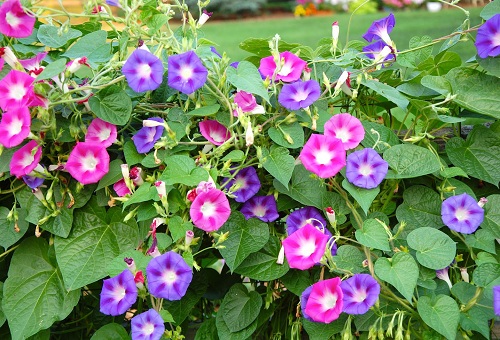
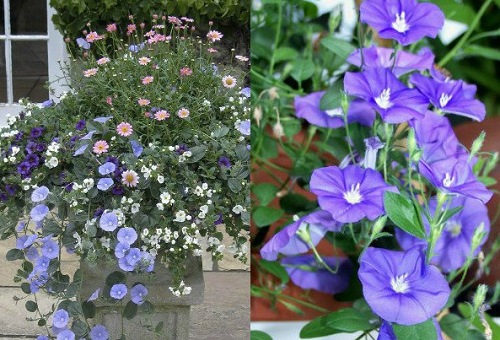
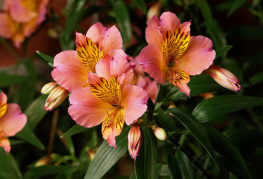
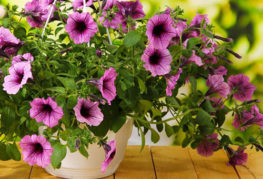
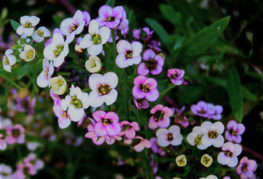
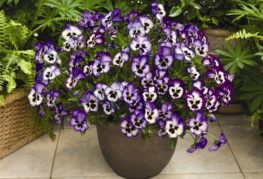
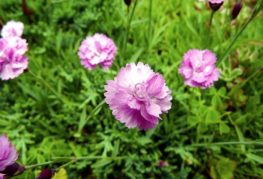
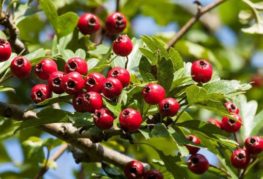
and will be published shortly.